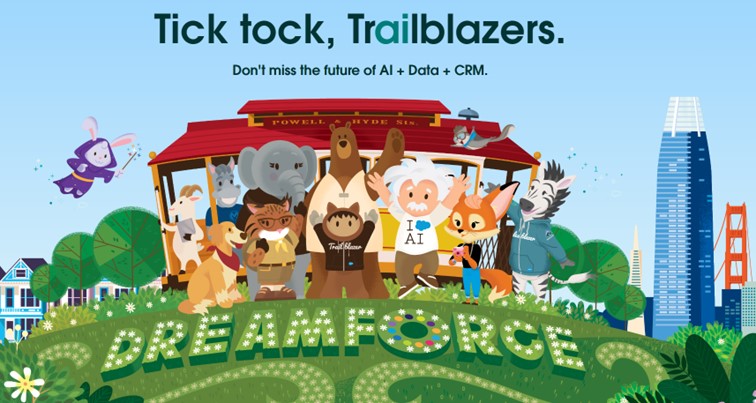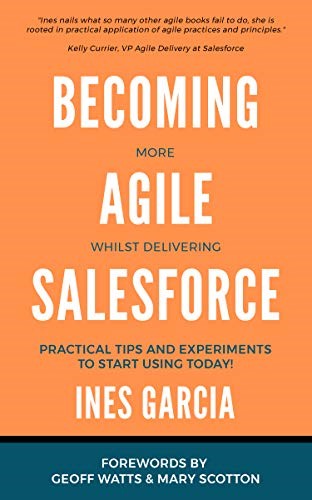Release Salesforce Winter’24, Dreamforce 23 what to except, Becoming Agile with Salesforce
Connect 4! It’s been 4 weeks, almost a month, since we started our summer series. And we’re not going to stop there! We’ll continue throughout August, with the continuation of topics we’ve already covered and the discovery of new ones. Until then, enjoy this 4th episode!
Winter '24 Release: Key Dates
Summer is in full swing, and we’re already thinking about winter??? We call it the “Salesforce Release” effect! Regardless of the season, the Salesforce release always has a head start in its name! For this new release, we can’t escape it. Here are the main estimated dates before availability in production:
- Pre-release org available: 10/08 (often earlier, in fact, if you already have an org).
- Release Notes available for preview: 16/08.
- Availability of the release in a sandbox if the sandbox type is “preview”: 25/08.
For availability in production, there are 3 weekends scheduled, but French orgs are usually migrated during the last 2 weekends, i.e., for the Winter ’24 release, on 7 or 14/10.
Here’s a quick reminder of best practices:
- Check the dates for your environments and if your sandbox environments are eligible for preview. You can do this on the Salesforce Trust site or on this site created by a Trailblazer.
- Anticipate the arrival of new features with the pre-release org (link to come) and the release notes.
- Allow some time to test the new features in your sandbox (in your context), manage the release updates, and be prepared for any eventuality.
We’ll be back later in the summer with more information and in the fall with our traditional article and webinar!
Custom Report Types: What's that?
Before defining custom report types, let’s define what a report type is in general: a report type is simply a set of objects and fields that will be available in the report you want to create.
The first step in creating a report is to choose a report type. It’s a bit like when you reach the top of the Empire State Building; you have to choose a certain angle of view: this angle will allow you to look at several places in front of you, to the right, to the left, but you won’t be able to see everything around you, naturally.
With Salesforce, it’s the same, even if you have a readily available database, you need to choose an angle of view before querying it.

Salesforce offers standard report types that already cover many use cases: almost all objects and fields are taken into account. However, there are cases where some use cases are not covered, and that’s when a custom report type is needed.
Here are the parameters of a custom report type:
- Its parent object and any child objects – if you select a child object, the “line-by-line” will be done at this level. For example, an opportunity can have one line, but if 2 child quotes are linked to it, then you will see 2 lines;
- The relationship between these objects: inner join or left inner join, as we say in SQL. In standard, only an inner join is used;
- Available columns (fields) and their categories, as well as the default ones.
These parameters cannot be modified in standard report types, which is where we need custom types. We will explore the creation of custom report types in more detail in a future article in our summer series.
What to Expect from Dreamforce 2023?

The Dreamforce program is taking shape!
We already knew that this Dreamforce would be themed AI + DATA + CRM. So, as for AI, it’s no longer a surprise, as Salesforce has recently invested heavily in this family of new features (cf. episode 3 of our series). We can expect the presentation of new features and demos.
As for data, it’s no surprise either. Recently, Salesforce has invested heavily in Data Cloud, which is an evolution of the CDP solution (we already talked about it at Dreamforce 2022 when it was called Genie). The idea is that the new real-time feature of Data Cloud will be an accelerator for AI. Remember that Data Cloud is considered by some to be Salesforce’s biggest invention since its inception!
These two major topics will have dedicated keynotes and several technical sessions. The list of sessions is almost finalized. Here’s a sneak peek:

Of course, we can count on the main keynote and the True To The Core session as major highlights of Dreamforce, as usual!
Several sessions will be available on Salesforce+, and we’ll give you the schedule as soon as it’s available.
Becoming Agile with Salesforce: A Must-Read for Everyone!
As we mentioned earlier this summer, we want to take a different approach in terms of learning support and introduce you to books from the Salesforce ecosystem! And there are many! We’ll have the opportunity to talk about Rock your role as a Salesforce Admin by Jordi Hribek, books by Marc Benioff, or other more technical books. But for today, let’s focus on Becoming More Agile Whilst delivering Salesforce by Ines Garcia.
Ines Garcia has been a Trailblazer since 2013 and is both an Agile Coach and Salesforce MVP: that alone makes you want to read this book! It’s full of anecdotes based on real-life experiences in Salesforce projects and practical advice that Ines shares while exploring Agile principles. An illustrative example: for the principle of delivering value quickly and continuously, Ines suggests trying out a very regular 30-minute demo, open to all, non-mandatory, with 15 minutes for the demo and 15 minutes for feedback!


Why did she write this book? Because she “wants to share that life doesn’t have to be so painful“:
👈
A beautiful intention when you consider the importance of taking care of the mental health of our employees! We need to make life easier! And thus, a wonderful realization of this intention with this book, thank you Ines!
See you next week for more information!
Article written by par Jean-Pierre Rizzi, Salesforce project manager and consultant.
